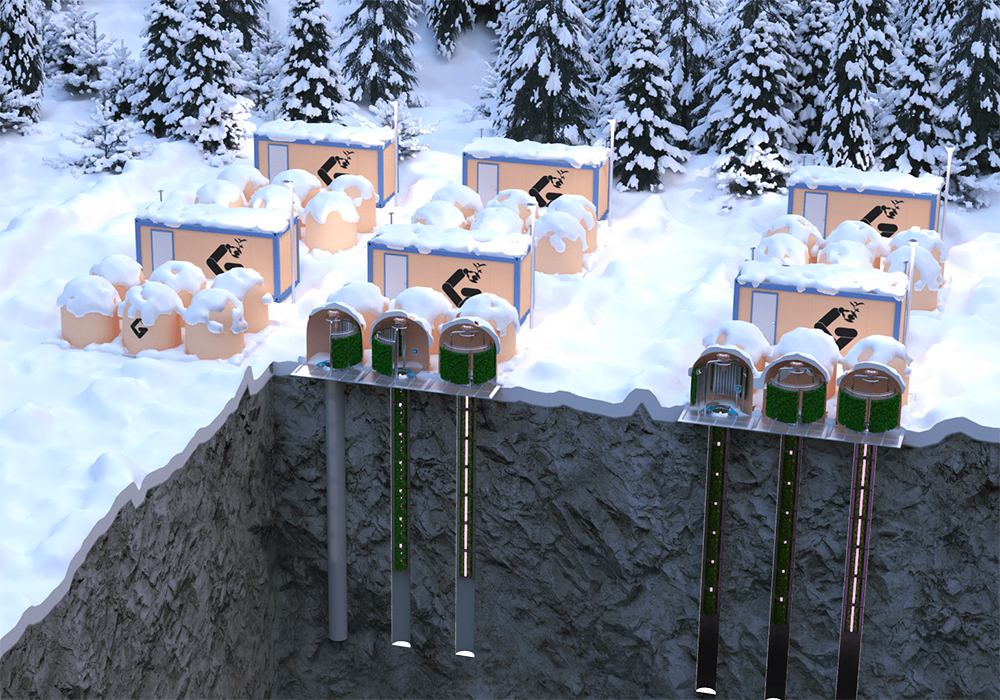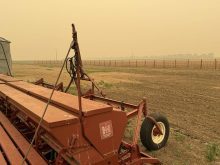Plants will be started in vertical frames and then lowered into large holes to reduce energy costs and space limitations
Traditional produce farming has seen a slow transition from flat fields and greenhouses to vertical production.
Now an eastern Canadian company wants to divert farm and garden producers’ attention in the opposite direction — deep inside the ground.
GreenForges of Montreal intends to tap the benefits of vertical farming, such as year-round production, high quality food and reduced water consumption, and deliberately bury them beneath the surface. It believes this strategy will simultaneously tackle vertical farming’s greatest challenges: energy costs and space limitations.
Incorporated in August 2019, the underground farming technology company has a staff of 16, excluding advisers.
Read Also

Farmland advisory committee created in Saskatchewan
The Saskatchewan government has created the Farm Land Ownership Advisory Committee to address farmer concerns and gain feedback about the issues.
“It’s growing fast, and the reason is the mission and the potential change it can bring to the world. It’s especially attractive to all who are open to listen,” said GreenForges’ chief marketing officer Nicola Maglio. “We’re a privately funded company with our initial order of business being to build a prototype and validate the first piece of technology we’re creating.”
He describes major construction that involves drilling 40, 60 or 90-inch diameter holes, or forges, of variable depth that are fitted with steel casings. Framed modules will be planted above ground, then mechanically lowered into the vertical tunnels and lifted for inspection or harvesting.
Artificial lighting inside the forges will be powered by renewable energy, including geothermal, depending on location.
“Water is recycled in a closed loop system,” said Maglio. “An above-ground tank will deliver it to the forges where it’s used and recycled. Water use is similar to vertical agriculture plus we believe there’s a 98 percent reduction in comparison to field farming.”
He said a computerized user interface will remotely control nutrient input, lighting and the raising and lowering of modules.
“All the variables will be regulated remotely from ground level. One of the large advantages will be the reduction of labour requirements as it will be simple to operate with minimal staff not having to walk long distances.”
Maglio says the company will start by growing leafy greens, herbs and berries because they’re the most economically viable, but the goal is to quickly offer more crop variety than their vertical counterparts. It envisions the forges will grow tomatoes, strawberries, mushrooms and eventually pulse crops.
“It will be a progression, starting with whatever makes sense. Ideally, we’ll get the technology to where we can grow staples like corn and wheat because that’s the holy grail of vertical farming. It’s where the calories are and where a dent can be made. We’re not going to feed the world with lettuce and basil.”
Maglio said vertical farming has its place in food production, but temperature control is a significant challenge. Large buildings must be heated or cooled to maintain optimal growing conditions.
“The underground is guaranteed a stable temperature, which means less energy is required for climatization,” he said. “We’re estimating we can cut 30 to 40 percent in energy spending as opposed to vertical, especially when we leverage geothermal energy to power the technology. We’re exploring this right now. Energy is the first major advantage.”
Underground farming is also adaptable to extreme surface environments, whether deserts or sub-zero climates. Rural and urban locales are suitable to support forges, which could be embedded beneath new high-rise buildings or placed in rural communities, giving owners an added source of revenue and access to fresh food.
“It unlocks agriculture in remote areas where it wouldn’t otherwise be possible,” said Maglio. “In addition to creating space for gardens and crops, digging holes doesn’t involve cutting forests or creating urban clutter. That’s the next advantage.”
While vertical farming is more efficient and productive per sq. metre than field agriculture, it’s also more intrusive than underground and requires space in large warehouses.
“Rather than encompassing the inside of a building, forges are embedded beneath infrastructure, meaning they don’t take up new space. It’s also more attainable as it’s easier to dig deeper as opposed to constructing a taller building.
“It becomes more of an economic variable than environmental, mainly dependent on prices and availability of resources, drilling and labour versus outside conditions.”
The business model of GreenForges’ relationship with land and building owners hasn’t been defined, said Maglio, but plans to establish a licensing approach that authorizes use of its technology to owners who would operate it. GreenForges would charge a fee for construction and recoup a percentage of product sales.
“We’re not trying to be the farm or monopolize the selling of produce,” Maglio said. ‘We’re creating technology and tools producers or business owners leverage and use to grow crops. We’re a technology company, not farmers.”
He said potential drawbacks lie in engineering variables that may only come to light once the prototype forge is working. Installation costs, higher produce prices, ventilation, humidity and availability of renewable energy are further challenges.
“Even with these obstacles, we estimate forges are more profitable than field or vertical farming long term. We’re currently foreseeing 2.5 times return on investment for our first attempt.”
GreenForges plans to start construction of a prototype forge during the first half of 2022 in conjunction with Zone Agtech, a Quebec-based ag tech innovation hub.
“The vision is to create technology that’s affordable and adoptable by urban and rural farmers in as many areas of the world as possible,” Maglio said. “We’re aiming to make it globally available and be a significant force in accelerating the world’s changing to a new sustainable and scalable food system.”















